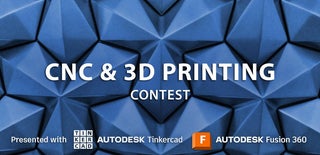Introduction: Laser Cut Chess Board and Figures Box
A long time ago I printed chess figures (egypt chess set) with my resin 3D printer. Initially, I simply printed out a chess board on paper - which was not really satisfactory. When I bought a new laser engraver this year, I had the idea to make a chess board with it. I wanted a combination with a storage option for the chess pieces.
Originally, I wanted to laser engrave the entire chessboard. Due to the long laser time (more than 12 hours), I had to think of something else. That's when I came up with the idea of applying a vinyl foil to the plywood and cutting it with the laser. This gives a great contrast between black and white fields with a short production time.
Supplies
- Plywood panels 3mm
- Self-adhesive vinyl film (e.g. YRYM HT 30cm x 305cm)
- clear varnish
- Magnets 8mm diameter, 3mm thick
- PLA filament
- Screws 2mm x 5mm
Step 1: Making the Chessboard
First, the self-adhesive vinyl film is applied to the plywood (which is previously well sanded to get a smooth surface). It is important to work carefully so that no air bubbles are created. The laser cutter is then used to cut the outline of the plywood board on the one hand, and on the other hand to cut out the playing fields and lettering from the film.
I used a Sculpfun S9 laser with 5W and the software Lightburn. In the screenshot of the program you can see which settings I used. The blue lines correspond to the cutting of the vinyl foil. For me 60% power and 1800mm/min worked well. The red line shows where the outer contour of the plywood is cut.
After everything is cut, the white areas of the chess board need to have the vinyl film carefully removed. I used a scalpel to gently lift the corners to do this and then peeled the vinyl off. Finally, several layers of clear coat are then applied.
In my case, individual wood fibers came loose when the film was removed. This would probably not be so noticeable if the first clear coat layers were applied before the film was applied.
Step 2: Making the Storage Box
On the internet I found the remarkable open source project Boxes.py. With the Python based Box Generator you can generate great templates for laser cutters very simple with just a few inputs.
I used a box from the Trays section for my storage box halves. Besides the size of the box, you also have to enter the plywood thickness and the cutting width of the laser. For me, a value of 0.05 worked well here.
After the parts are cut out, you can join them together using the fingers. I also used glue to give the box additional support.
The holes for the face magnets are not yet included in the SVG file. I drilled the holes before I assembled the boxes. For this I fixed the two side parts with a screw clamp and drilled the holes in one pass (with a 10mm drill bit). This way they are exactly aligned with each other. It would be more elegant to make the holes with the laser cutter.
Attachments
Step 3: 3D Printing of the Magnetic Closures
I decided to hold the two box halves together using magents. To do this, I designed magnetic holders for the corners and made them with the 3D printer. To prevent the two halves of the chess board from slipping apart, I also attached magnets to the front side.
When printing, a stop is inserted at 3.6mm for the lock and 5.8mm for the corners, where the magnets are then inserted. When inserting the magnets, pay attention to the orientation. It is important that half of the connectors have reverse polarity to the others.
Step 4: Completion
Finally, the magnetic connectors are screwed into the corners and onto the front side. The polarity of the magnets is visualized in the picture. The game board is then glued to the storage box.

Participated in the
CNC and 3D Printing Contest
















